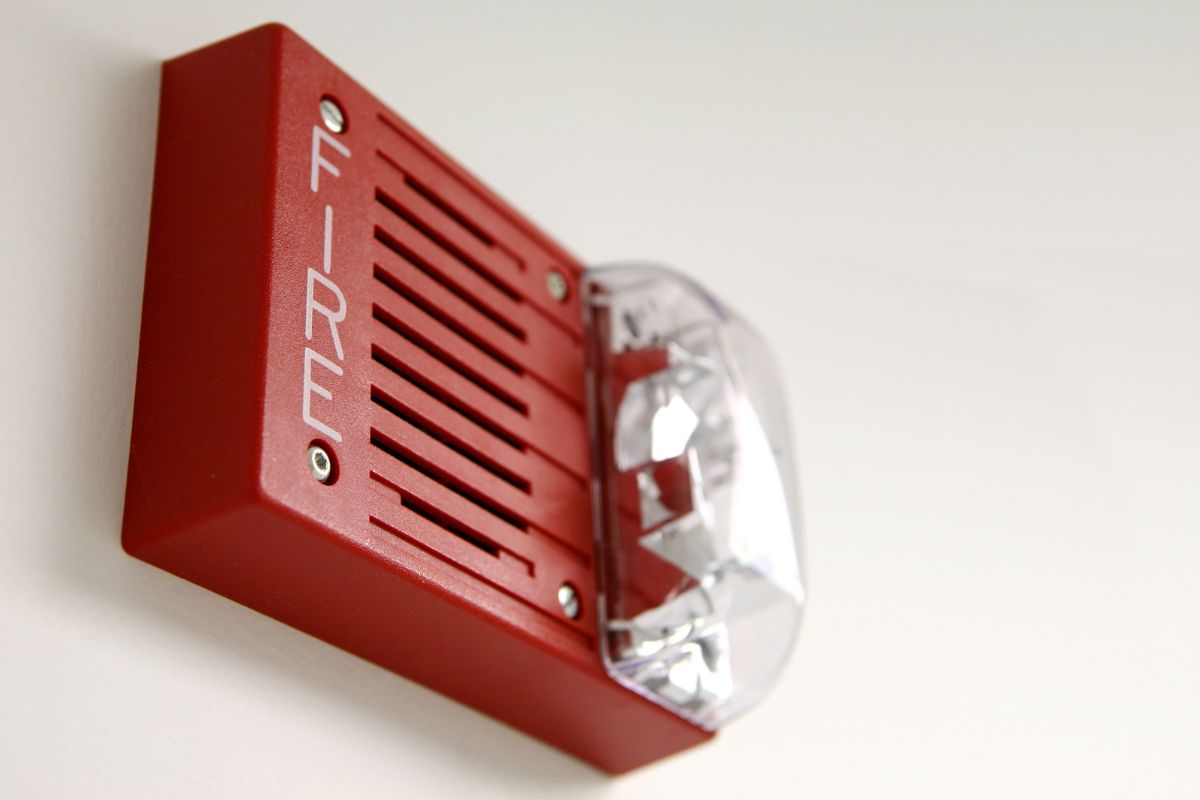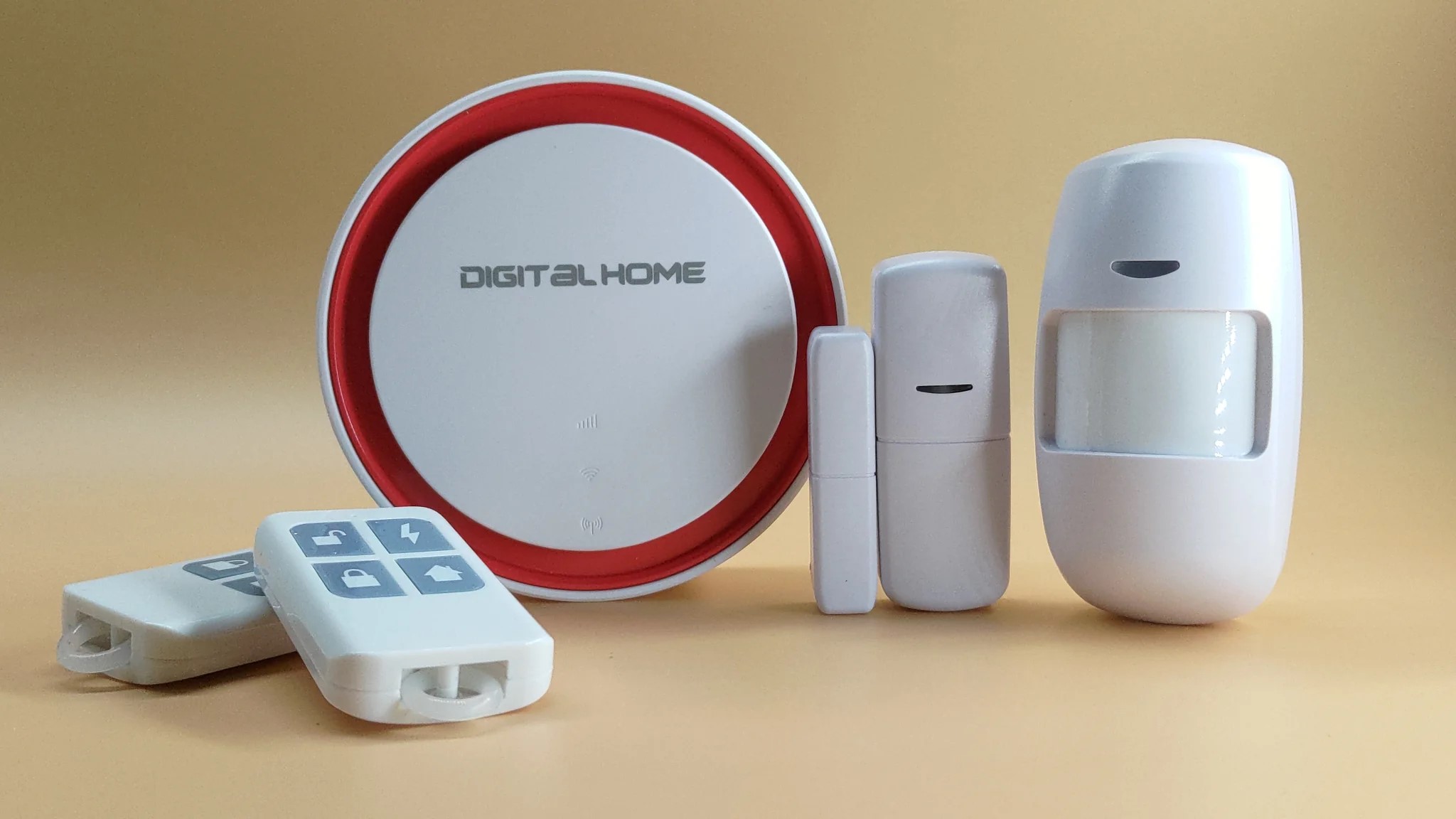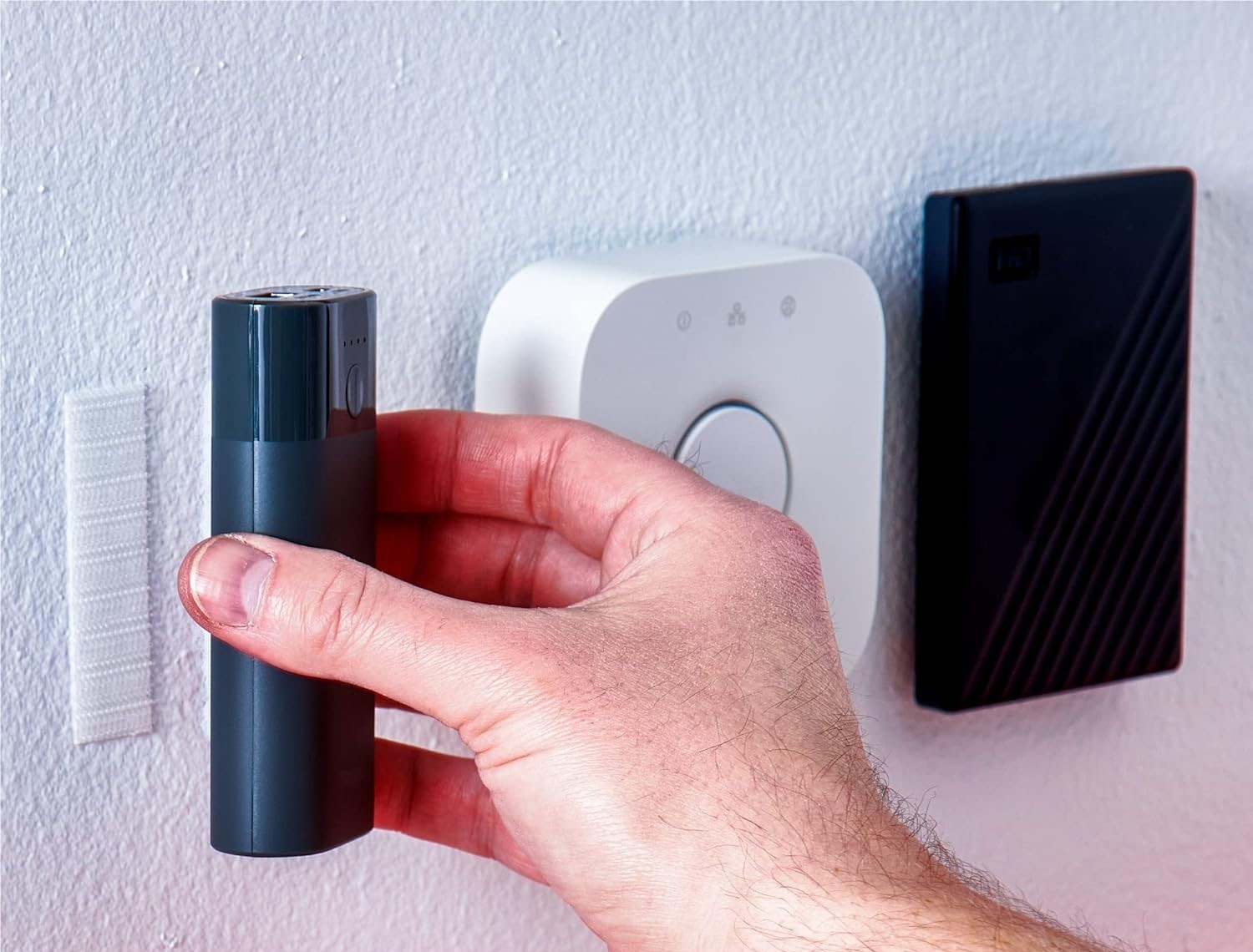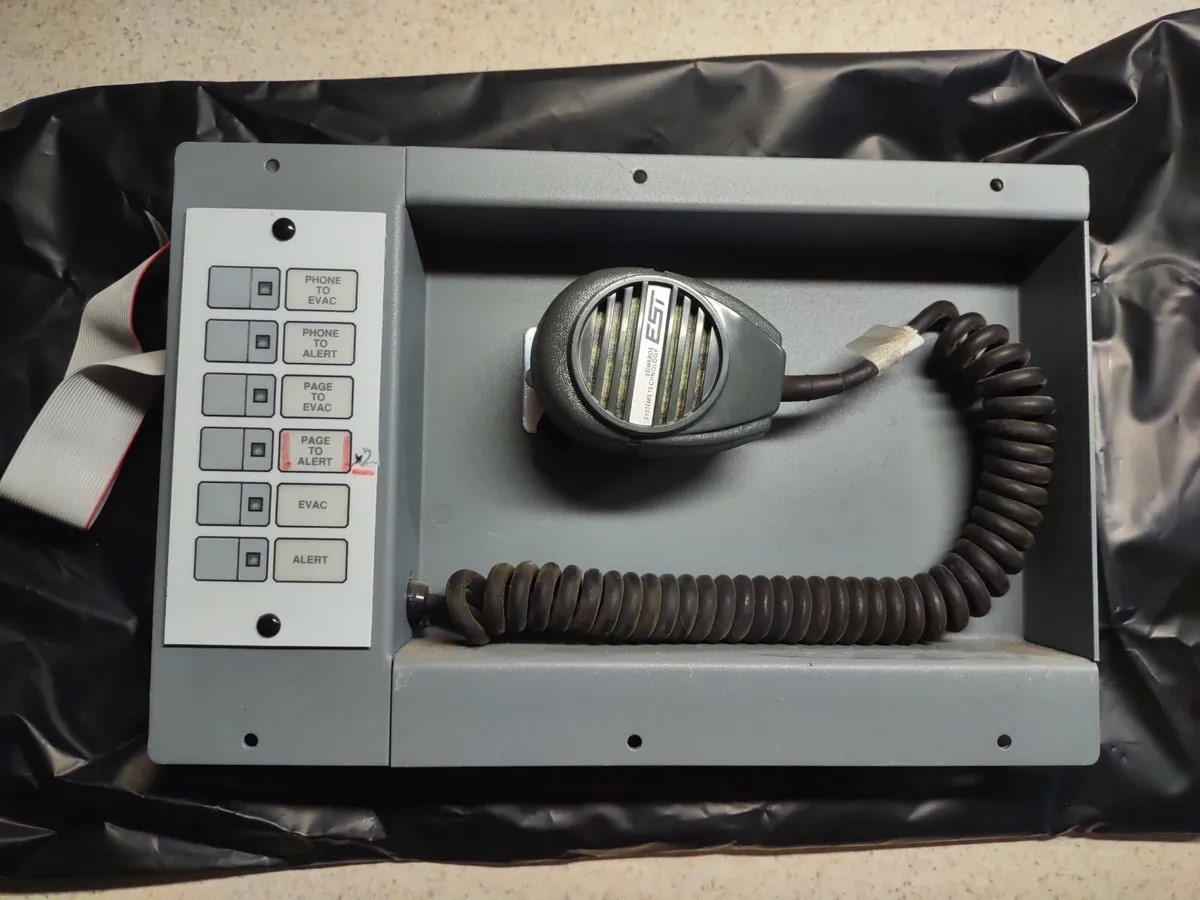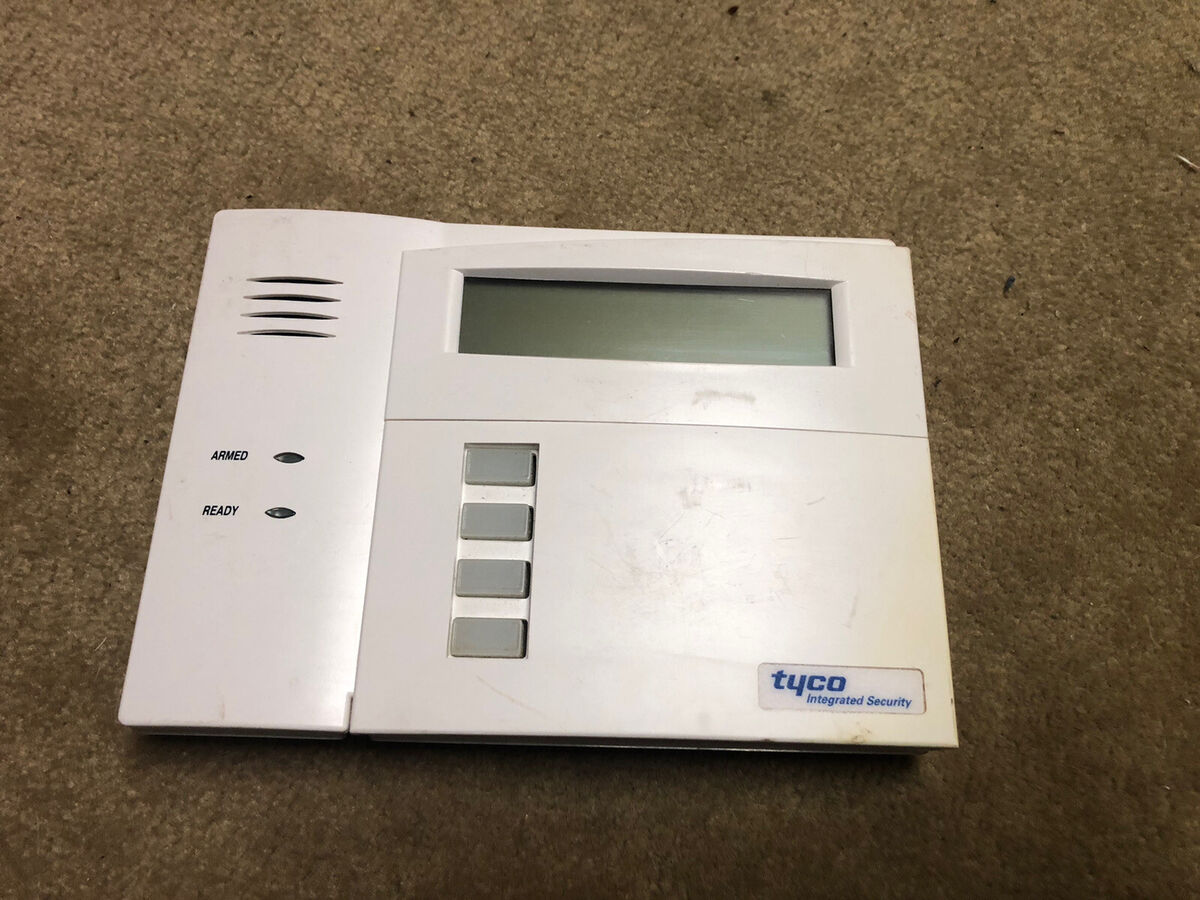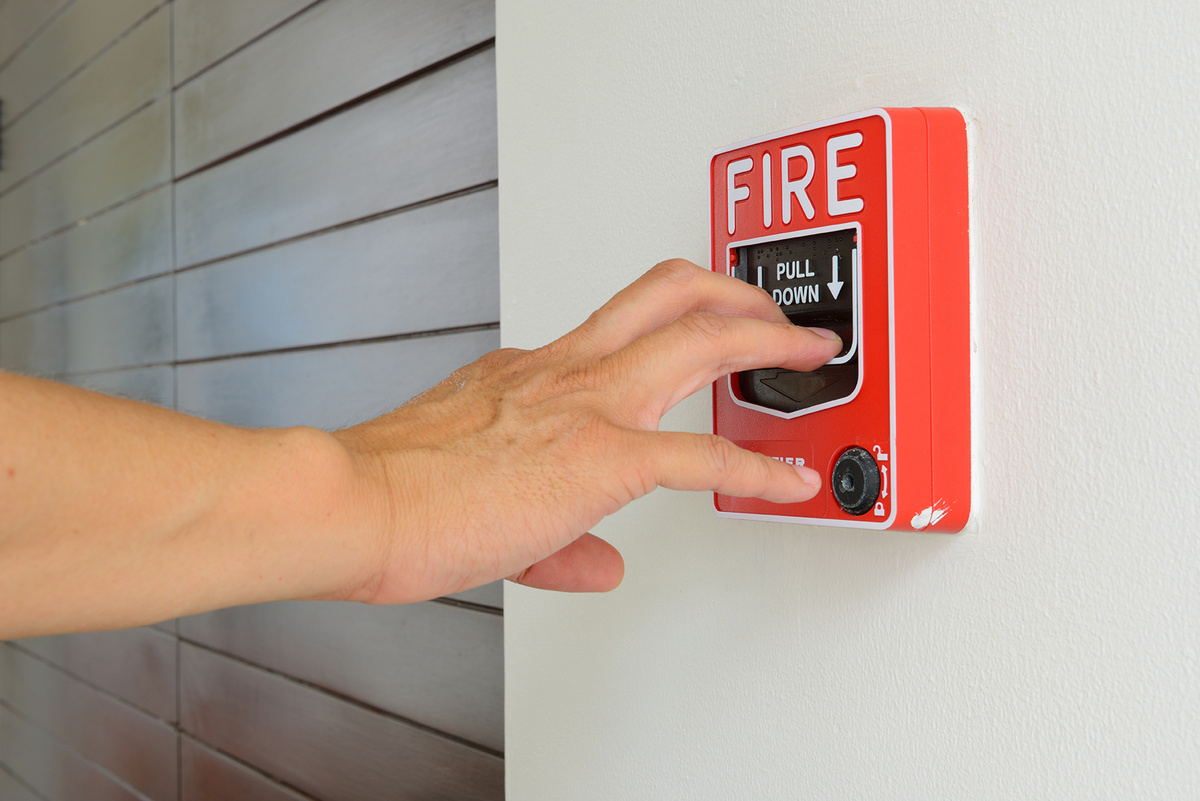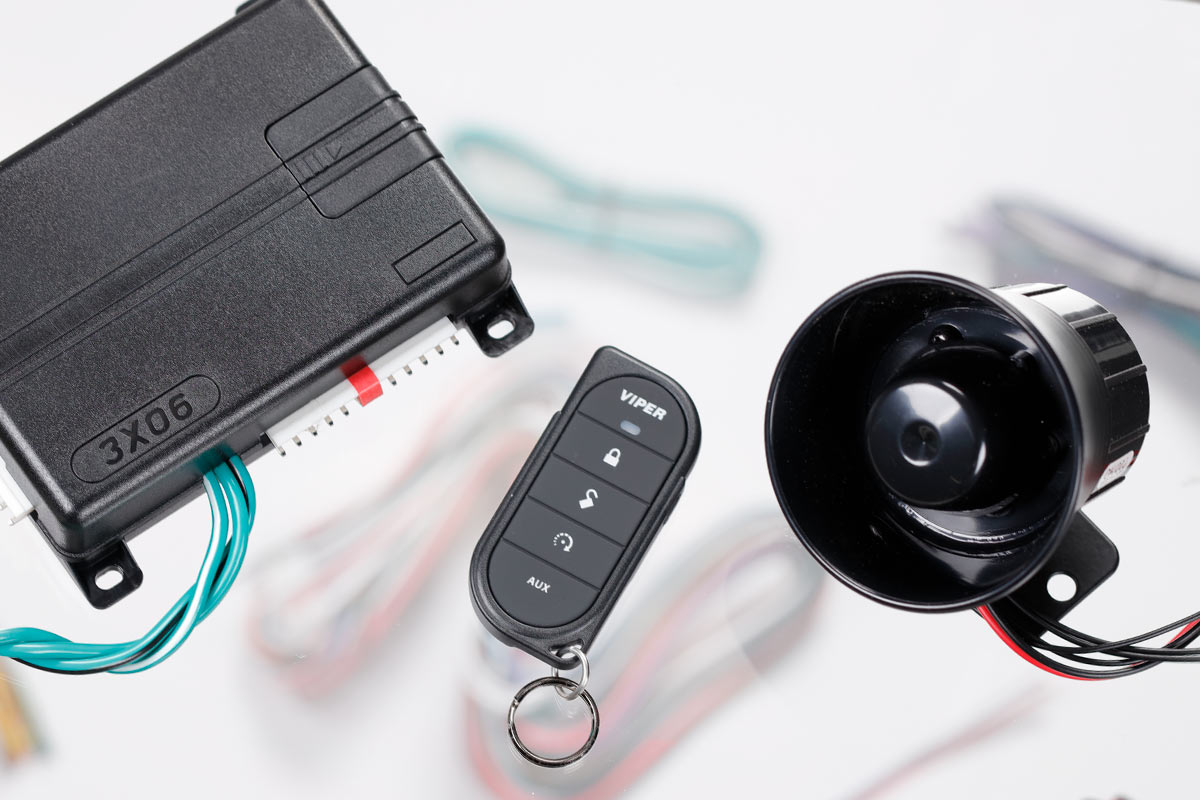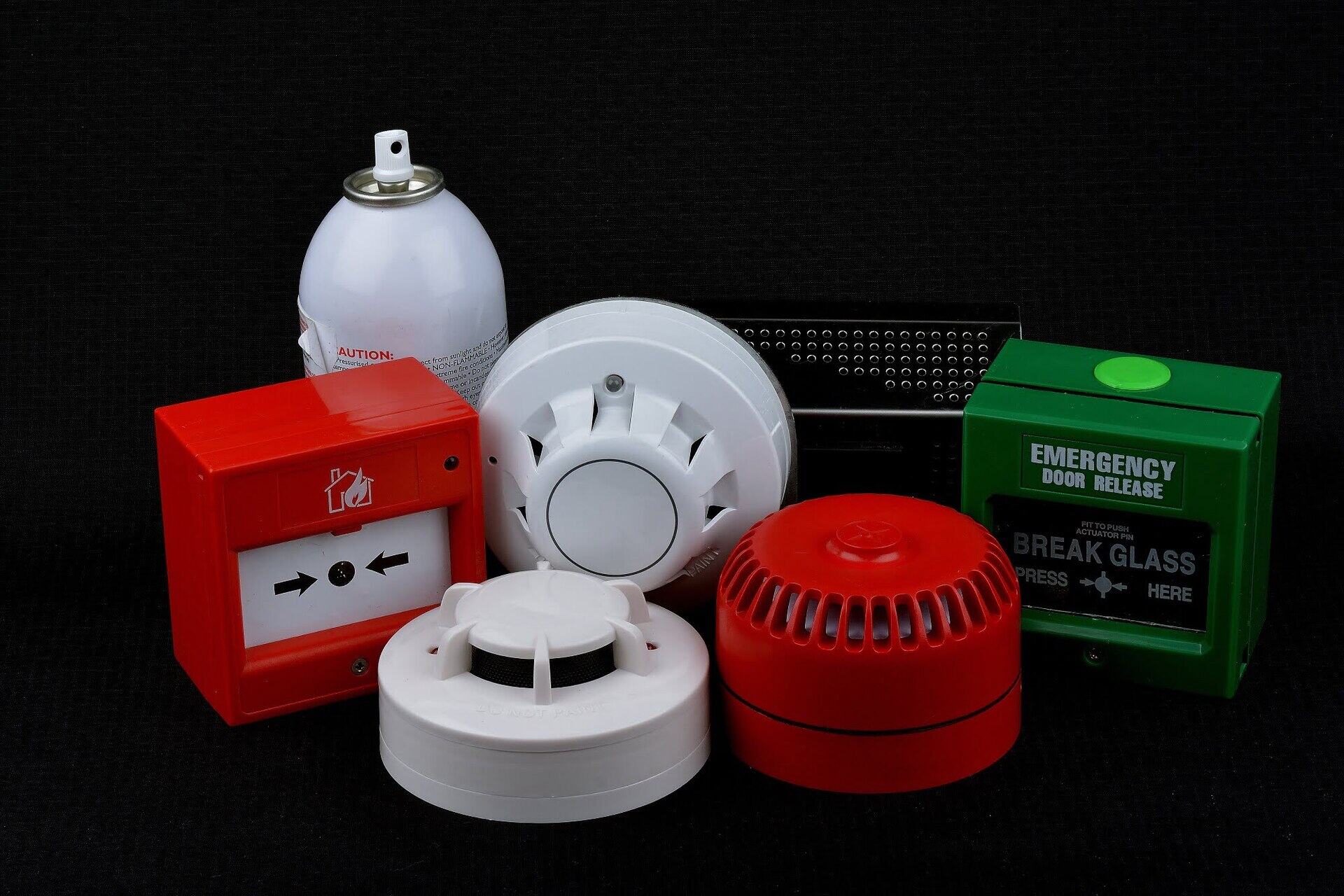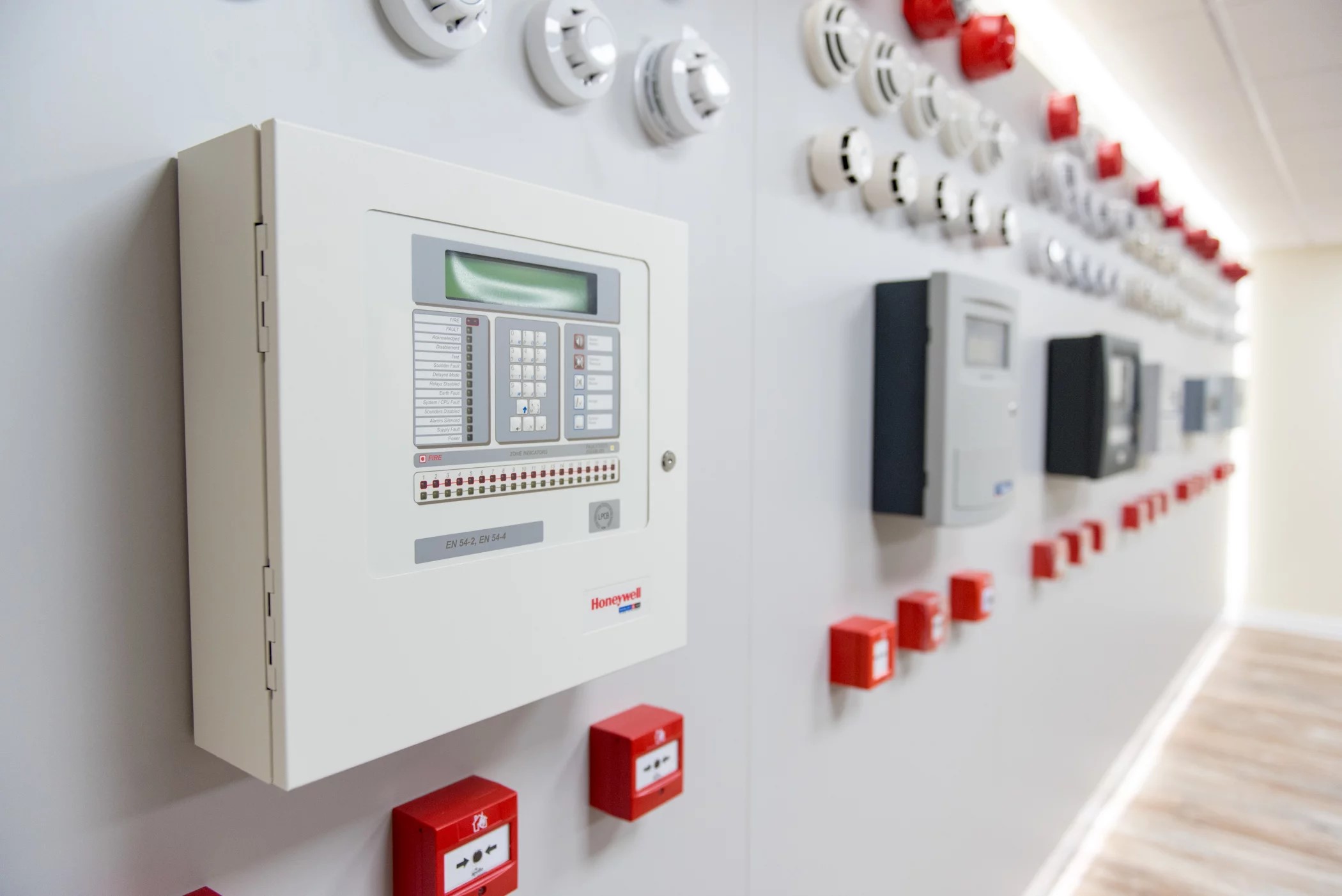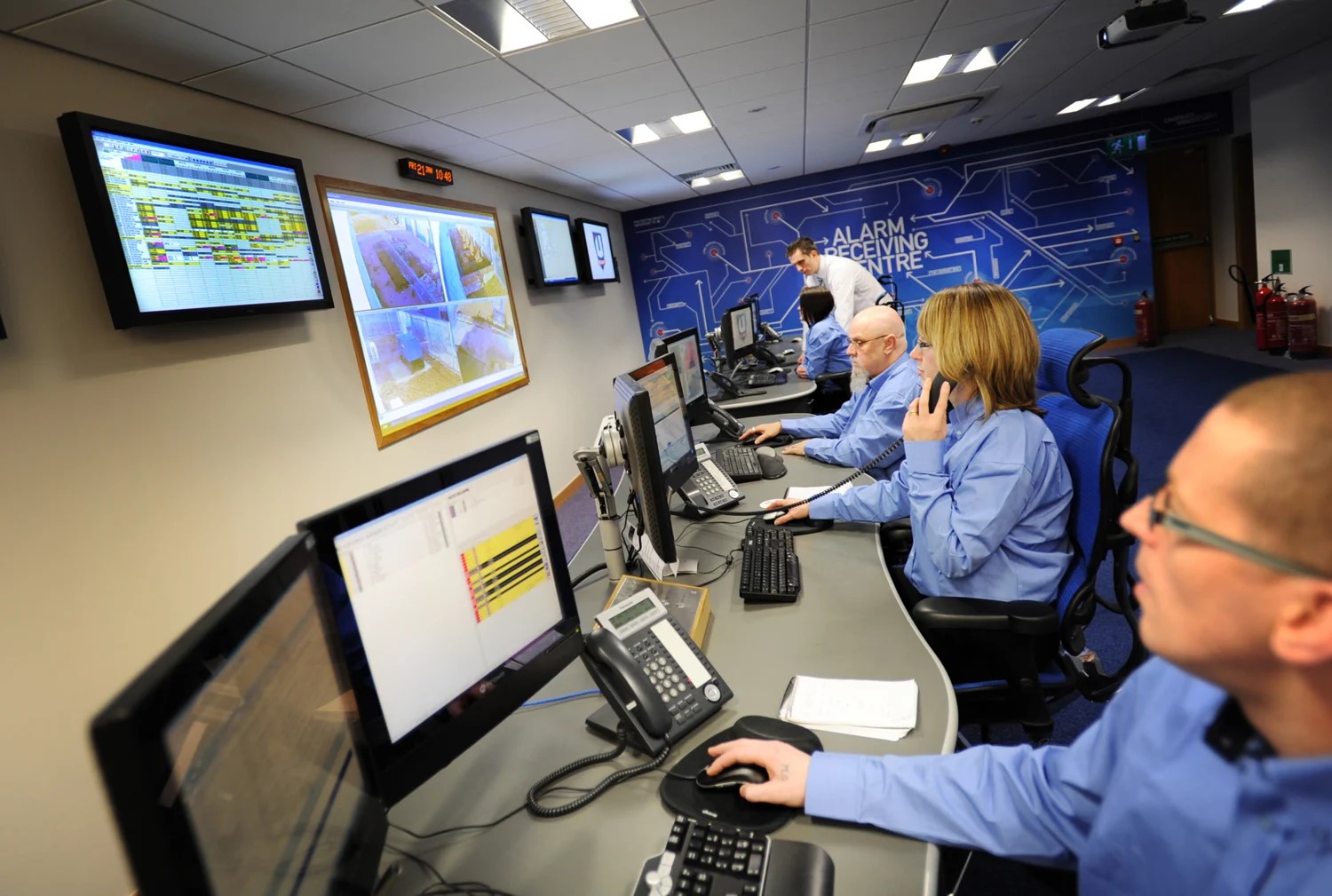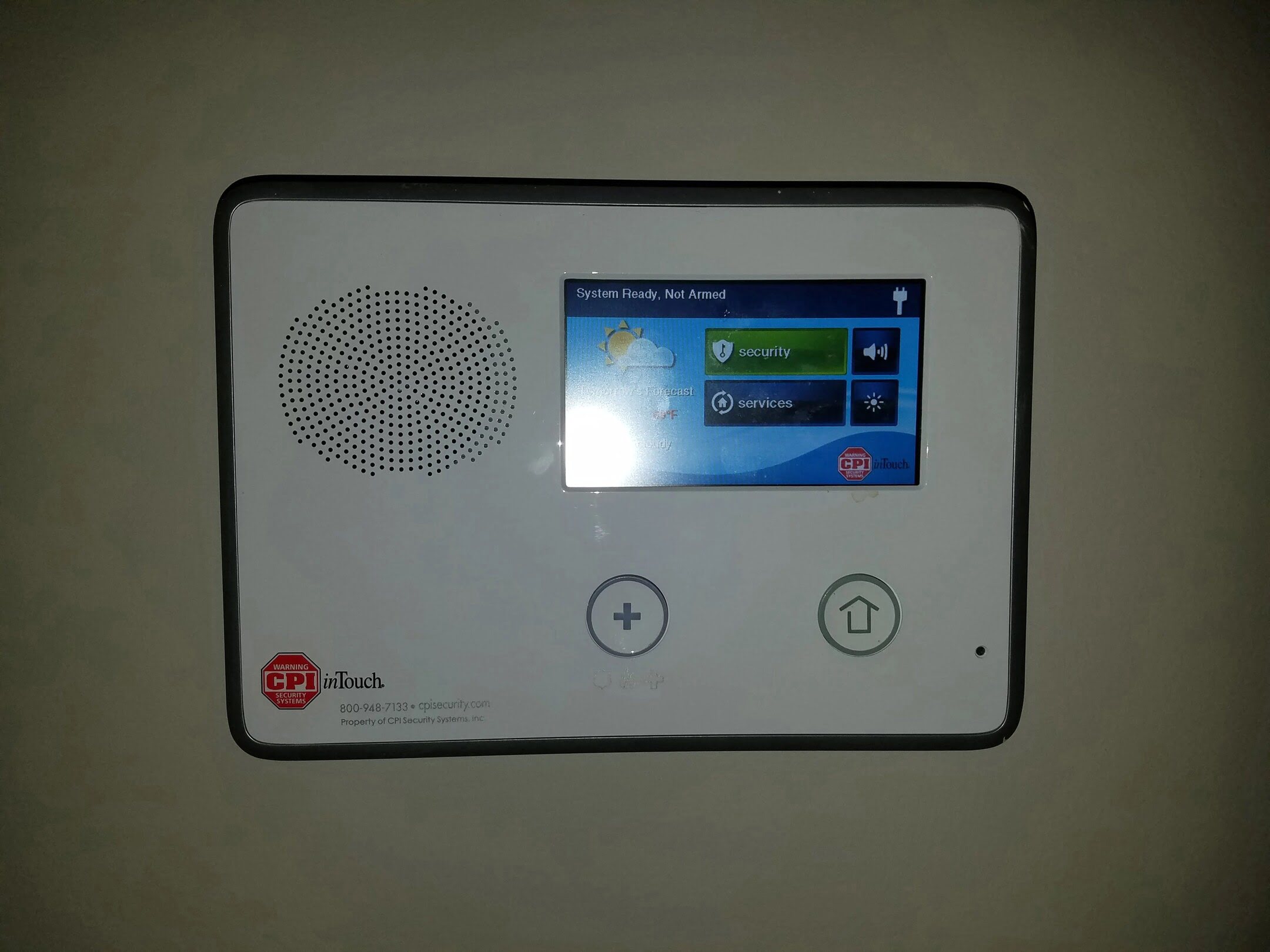Home>Home Security and Surveillance>What Voltage Do Fire Alarm Systems Use
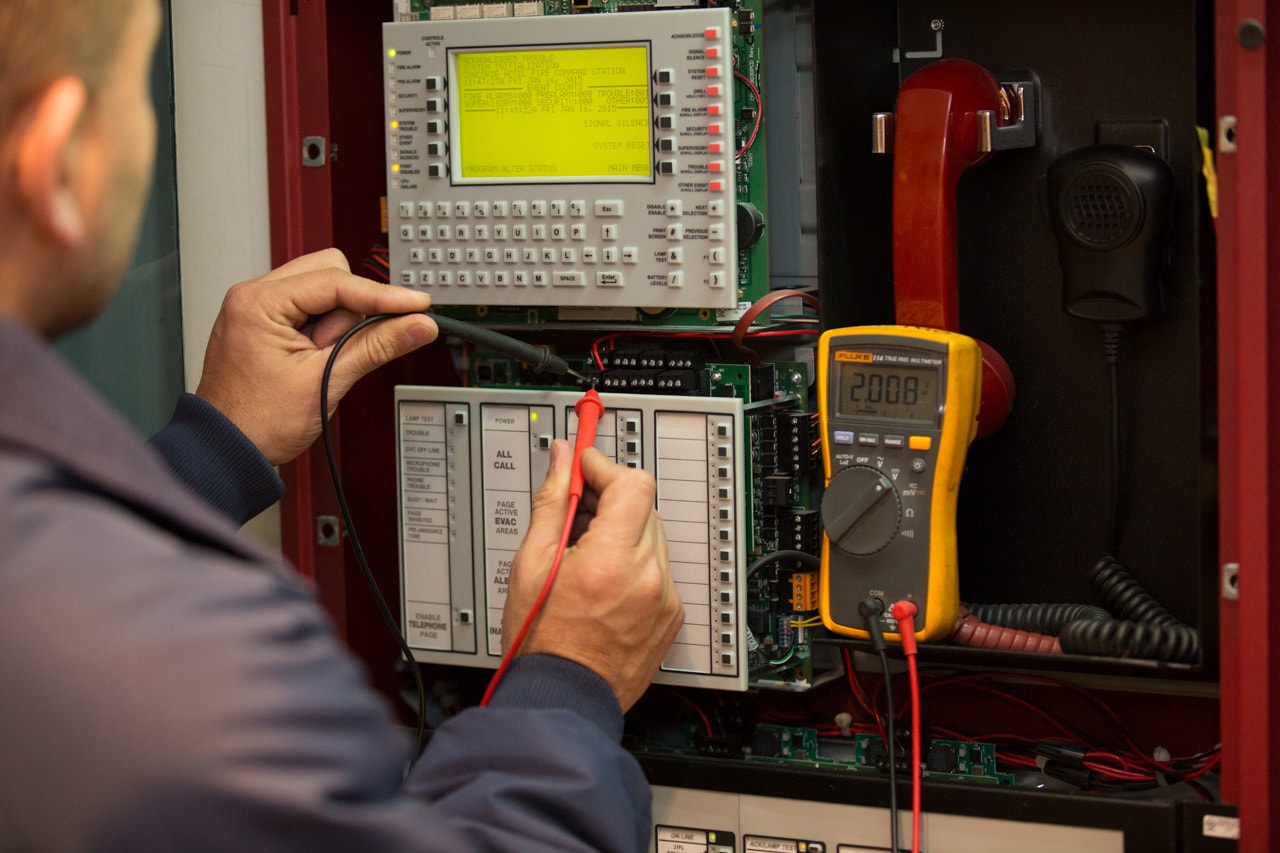

Home Security and Surveillance
What Voltage Do Fire Alarm Systems Use
Modified: October 20, 2024
Discover what voltage fire alarm systems use in your home. Learn about the importance of home security and surveillance for fire prevention.
(Many of the links in this article redirect to a specific reviewed product. Your purchase of these products through affiliate links helps to generate commission for Storables.com, at no extra cost. Learn more)
Introduction
Welcome to the world of home security and surveillance! In this fast-paced and ever-evolving digital era, ensuring the safety and protection of our homes has become more important than ever. With the rise in crime rates and the increasing need for advanced security measures, homeowners are turning towards state-of-the-art technologies to safeguard their properties.
One crucial aspect of home security is the installation of a reliable fire alarm system. Fire can be a catastrophic threat, causing immense damage to property and endangering lives. That’s why having a properly functioning fire alarm system is not just a matter of convenience, but a necessity in today’s world.
In this comprehensive guide, we will delve into the world of fire alarm systems, exploring their components, power requirements, voltage levels, and factors that affect voltage selection. Whether you’re a homeowner looking to install a new fire alarm system or a security professional seeking in-depth knowledge, this article will serve as your go-to resource.
Understanding the intricacies of fire alarm systems is crucial for making informed decisions when it comes to installation and maintenance. By gaining a comprehensive understanding of the power requirements and voltage levels associated with these systems, you’ll be better equipped to ensure the safety and security of your home or property.
So, buckle up and get ready to dive into the world of fire alarm systems. Let’s explore the various components and discover the voltage needed to operate these critical security devices.
Key Takeaways:
- Fire alarm systems use low voltage power, typically ranging from 9 to 30 volts DC, to ensure safety and compatibility with various components, reducing the risk of electrical shock during maintenance.
- Proper installation, regular maintenance, and user education are crucial for the reliable operation of fire alarm systems, ensuring early detection of fires and prompt evacuation to save lives and minimize property damage.
Understanding Fire Alarm Systems
Before we delve into the technicalities of voltage requirements, it’s important to have a basic understanding of how fire alarm systems function. Fire alarm systems are designed to detect and alert occupants of a building in the event of a fire. They are composed of various components that work together to provide early warning and initiate the necessary actions to mitigate the risk.
The primary function of a fire alarm system is to detect fire or smoke. This is achieved through the use of smoke detectors, heat detectors, or a combination of both. Smoke detectors utilize optical or ionization sensors to detect the presence of smoke particles, while heat detectors respond to an increase in temperature beyond a predetermined threshold.
Once a fire or smoke is detected, the fire alarm system triggers audio and visual alarms to alert occupants of the building. This can include loud sirens, flashing lights, or even voice evacuation messages depending on the complexity of the system. The purpose of these alarms is to notify everyone in the vicinity about the potential danger and prompt them to evacuate quickly and safely.
Additionally, fire alarm systems can be integrated with other security systems, such as access control or surveillance cameras, to provide a comprehensive security solution. This ensures that in the event of a fire, appropriate actions can be taken, such as unlocking doors for easy evacuation or enabling real-time monitoring of the situation.
Fire alarm systems are typically installed in strategic locations throughout a building, including hallways, stairwells, and individual rooms. This ensures maximum coverage and ensures that any signs of fire or smoke are detected promptly, regardless of the location within the premises. It’s important to conduct a thorough assessment of the building layout and occupancy requirements to determine the optimal placement of these systems.
Overall, fire alarm systems are a critical component of any home or building’s safety infrastructure. They provide early warning and help prevent the spread of fire, giving occupants valuable time to evacuate and reducing the risk of injuries and fatalities.
Now that we have a general understanding of fire alarm systems, let’s dive into the various components that make up these vital security systems.
Components of Fire Alarm Systems
Fire alarm systems consist of several essential components that work seamlessly together to detect fires and alert occupants of a building. Understanding these components is crucial for ensuring the reliable operation of the fire alarm system. Let’s take a closer look at each of these components:
- Control Panel: The control panel is the brain of the fire alarm system. It receives information from the various sensors and initiates the appropriate response, such as activating the alarms and notifying authorities. The control panel also provides a means for users to monitor and control the system.
- Smoke Detectors: Smoke detectors are arguably the most crucial component of a fire alarm system. They detect the presence of smoke particles in the air, which can be an early indication of a fire. Smoke detectors can be of various types, including ionization smoke detectors and photoelectric smoke detectors, each with their own working principles.
- Heat Detectors: Heat detectors, as the name suggests, detect an increase in temperature beyond a predefined threshold. They are typically used in areas where smoke detectors may not be suitable, such as kitchens or garages, where smoke and fumes generated during cooking or vehicle maintenance can trigger false alarms.
- Fire Alarm Control Modules: These modules are responsible for receiving signals from the smoke detectors and heat detectors and relaying that information to the control panel. They ensure that the control panel receives accurate and timely information about any potential fire or smoke incidents.
- Notification Devices: Notification devices include audible and visual alarms that alert occupants of a building in the event of a fire. These devices can include sirens, strobe lights, or even voice evacuation systems. The goal is to provide clear and unmistakable signals to prompt immediate evacuation.
- Manual Call Points: Manual call points, also known as fire alarm pull stations, are devices that allow individuals to manually trigger the fire alarm system by breaking a protective glass or pressing a button. These devices are crucial in emergency situations where occupants can quickly identify and report a fire.
- Power Supply: Fire alarm systems require a reliable power source to operate effectively. This can be achieved through various means, including AC power from the building’s electrical system, backup batteries, or even dedicated uninterruptible power supply (UPS) systems to ensure continuous operation in case of a power outage.
These are the primary components found in most fire alarm systems. However, it’s important to note that the specific configuration and additional features may vary depending on the size and complexity of the building, as well as any specific requirements and regulations that need to be met.
Now that we’ve covered the components of fire alarm systems, let’s move on to understanding the power requirements for these systems.
Power Requirements for Fire Alarm Systems
A reliable power supply is essential for the proper functioning of a fire alarm system. Powering the various components of the system ensures that they can constantly monitor for fires and promptly alert occupants in case of an emergency. Let’s explore the power requirements for fire alarm systems:
AC Power: Many fire alarm systems are designed to be connected to the building’s electrical system to draw power. This ensures a continuous and reliable power source, as long as the building’s electricity is functioning properly. It is important to ensure that the electrical circuit used for the fire alarm system is dedicated solely to the system and not shared with other electrical loads, to prevent any potential power fluctuations or disruptions.
Backup Batteries: To maintain operation during power outages or electrical failures, fire alarm systems are typically equipped with backup batteries. These batteries act as a reliable power source when the main AC power is unavailable, ensuring the system’s continuous operation. Backup batteries should be regularly tested and replaced according to manufacturer guidelines to ensure their effectiveness in emergency situations.
Uninterruptible Power Supply (UPS): For added protection and extended backup power, some fire alarm systems incorporate dedicated uninterruptible power supply (UPS) units. UPS systems provide temporary power during power outages, ensuring uninterrupted operation until the main power is restored or until the backup batteries are depleted. This additional layer of power protection can be particularly valuable in critical environments or where fire alarm systems are required to function for extended periods without external power.
It’s worth noting that fire alarm systems are subject to specific regulations and standards regarding power requirements. These regulations stipulate the maximum allowable time for backup power to ensure the system remains operational during emergencies. Compliance with these regulations is crucial to ensure the safety and reliability of the fire alarm system.
When designing or upgrading a fire alarm system, it’s essential to consult with professionals who understand the power requirements and can help determine the most appropriate power supply configuration for your particular needs. Adequate power supply is vital not only for the functionality of the system but also for meeting compliance standards and ensuring the safety of occupants.
Now that we’ve explored the power requirements for fire alarm systems, let’s move on to discussing the voltage levels associated with these systems.
Most fire alarm systems use a voltage of 24 volts. It’s important to always check the manufacturer’s specifications to ensure the correct voltage is used for your specific system.
Voltage Levels for Fire Alarm Systems
Fire alarm systems operate using specific voltage levels to ensure their proper functioning and reliable performance. Understanding the voltage requirements is crucial when installing, maintaining, or upgrading fire alarm systems. Let’s take a closer look at the typical voltage levels associated with these systems:
Low Voltage Systems: Most fire alarm systems utilize low voltage power, typically ranging from 9 to 30 volts DC (direct current). Low voltage systems are preferred for their safety and compatibility with various types of fire alarm components, including detectors, control panels, and notification devices. The use of low voltage reduces the risk of electrical shock, especially in situations where maintenance or troubleshooting may be required.
Notification Device Voltage: The voltage required for notification devices such as sounders, strobe lights, and other audible or visual alarms can vary depending on the specific equipment. Typically, these devices are designed to operate at either 24 volts DC or 120 volts AC (alternating current) depending on the power source available. In instances where 120 volt AC devices are used, a power supply or transformer is typically installed to step down the voltage to the required level.
Instrument Power Voltage: Instrument power is the voltage required to power the control panel and other electronic devices within the fire alarm system. This is typically supplied at a constant 24 volts or 12 volts DC. It is important to ensure that the control panel and other electronic components are compatible with the specific voltage level to avoid any performance issues or damage to the equipment.
It’s worth noting that while the voltage levels mentioned above are the most common for fire alarm systems, the specific requirements may vary depending on the manufacturer, model, and type of system being used. It’s essential to refer to the manufacturer’s guidelines, specifications, and documentation when determining the appropriate voltage levels for your specific application.
Factors such as wire resistance, system load, and voltage drop should also be considered when designing and installing fire alarm systems. Proper wire sizing and voltage calculations ensure that the required voltage is consistently supplied to all components, even at the furthest points from the power source.
It’s recommended to work with experienced fire alarm professionals who have a deep understanding of the voltage requirements and regulations associated with fire alarm systems. They can help ensure that the voltage levels are properly addressed during installation, maintenance, and any necessary modifications to keep your system operating at its optimal level.
Now that we have a better understanding of the voltage levels involved in fire alarm systems, let’s explore the factors that can affect the selection of the appropriate voltage for these systems.
Read more: Who Designs Fire Alarm Systems
Factors Affecting Voltage Selection
Choosing the appropriate voltage for a fire alarm system is a critical decision that requires careful consideration of various factors. The voltage selection can impact the performance, compatibility, and overall effectiveness of the system. Let’s explore some of the key factors that can influence the voltage selection:
Equipment Compatibility: One of the primary factors to consider when selecting a voltage for a fire alarm system is the compatibility of the equipment being used. Different manufacturers may design their devices to operate at specific voltage levels. It’s crucial to ensure that all components, such as smoke detectors, control panels, and notification devices, are compatible with the chosen voltage to avoid compatibility issues and ensure optimal performance.
Power Availability and Infrastructure: The availability of power sources and the existing electrical infrastructure in the building also play a role in selecting the appropriate voltage for a fire alarm system. If the building already has a dedicated low voltage system in place, it may be more practical to align the fire alarm system with the existing infrastructure. On the other hand, if there are specific electrical requirements or limitations, such as a need for higher voltage due to long wire runs, a different voltage level may need to be considered.
Regulatory Compliance: Fire alarm systems must comply with specific regulations and codes to ensure the safety and wellbeing of building occupants. Regulatory authorities may have standards or guidelines specifying the required voltage levels for fire alarm systems. It’s crucial to consult these regulations and ensure that the chosen voltage aligns with the compliance requirements in your region. Adhering to these regulations not only ensures the system’s proper functioning but also helps meet legal and safety obligations.
Ability to Support System Load: The voltage level chosen must be able to support the electrical load of the fire alarm system. Each component, including detectors, control panels, and notification devices, has a specific power requirement. It’s important to consider the combined power demand of all components and ensure that the selected voltage level can provide sufficient power without overloading the system. This helps ensure consistent and reliable operation of the fire alarm system.
Future Expansion and Upgrades: Consideration should be given to future expansion and upgrades when selecting the voltage for a fire alarm system. If there are plans to expand the system or incorporate additional devices, it’s important to choose a voltage level that can accommodate potential future needs. This can avoid the hassle and added expense of having to reconfigure or upgrade the system if changes are made down the line.
By taking into account these factors, you can make an informed decision when selecting the voltage for your fire alarm system. It’s always recommended to consult with experienced fire alarm professionals who can assess the specific requirements of your building and guide you in choosing the most suitable voltage for your fire alarm system.
Now that we’ve covered the factors that can influence voltage selection, let’s move on to discussing the installation and maintenance of fire alarm systems.
Installation and Maintenance of Fire Alarm Systems
The proper installation and regular maintenance of fire alarm systems are vital for their reliable and effective operation. A well-designed and maintained system can provide early detection of fires and prompt evacuation, potentially saving lives and minimizing property damage. Here are some key considerations for the installation and maintenance of fire alarm systems:
Professional Installation: It is highly recommended to have fire alarm systems installed by qualified professionals who have expertise in designing and installing these systems. They can assess the specific needs of your building, determine the optimal placement of detectors and devices, and ensure that the wiring and connections meet regulatory requirements.
Code Compliance: Fire alarm systems must adhere to specific codes and regulations that vary by location. Compliance with these codes ensures that the system meets industry standards for safety and functionality. Professional installers are familiar with these codes and can ensure proper installation according to the applicable regulations.
Regular Inspections: Fire alarm systems should undergo regular inspections to ensure that all components are functioning properly. This includes testing smoke detectors, heat detectors, control panels, notification devices, and backup power systems. Inspections are typically performed annually or as required by local codes. Regular inspections help identify any issues that may impact the system’s performance and allow for prompt maintenance or repair.
Testing and Maintenance: In addition to inspections, periodic testing and maintenance are essential to ensure that the fire alarm system operates correctly. This includes testing the functioning of detectors, alarms, and communication devices. Regular maintenance tasks may include cleaning detectors, checking wiring and connections, and replacing backup batteries as needed. Following the manufacturer’s guidelines for testing and maintenance is crucial to maintain the system’s reliability.
User Education: Building occupants should be educated about the operation and response procedures of the fire alarm system. This includes familiarizing them with the sound and appearance of alarms, evacuation plans, and the importance of promptly reporting any signs of fire or smoke. User education can help ensure a quick and orderly evacuation in emergency situations.
Record Keeping: It is important to maintain detailed records of all inspections, testing, and maintenance performed on the fire alarm system. This includes documenting any repairs or upgrades made to the system. Having clear and accurate records can help demonstrate compliance with regulatory requirements and provide a history of the system’s maintenance and performance.
By following these installation and maintenance practices, you can ensure that your fire alarm system operates optimally and provides reliable protection for your property and occupants. Regular inspections, testing, and maintenance help identify and address any issues promptly, minimizing the risk of system failure in critical situations.
Now that we’ve covered the installation and maintenance aspects, let’s wrap up our guide on fire alarm systems.
Conclusion
Fire alarm systems are an essential part of any home or building’s safety infrastructure. These systems provide early detection of fires, enabling quick response and evacuation, ultimately saving lives and minimizing property damage. Understanding the components, power requirements, voltage levels, and factors affecting voltage selection is crucial when it comes to installing, maintaining, or upgrading fire alarm systems.
By gaining a comprehensive understanding of fire alarm systems, you can make informed decisions to ensure the safety and security of your property. It’s important to work with qualified professionals who have expertise in fire alarm system installation, as they can guide you through the process, ensuring compliance with codes and regulations specific to your location.
Regular inspections, testing, and maintenance are essential to keep the fire alarm system in optimal working condition. These practices help identify any issues that may affect the system’s performance and allow for prompt repairs or upgrades. Adhering to the manufacturer’s guidelines and maintaining accurate records of inspections and maintenance activities are key for system reliability and regulatory compliance.
Additionally, user education plays a crucial role in ensuring the proper response to fire alarm systems. Educating building occupants about evacuation procedures, the sound and appearance of alarms, and the importance of reporting any signs of fire or smoke promotes a culture of safety.
As technology continues to advance, so do fire alarm systems. Being aware of new developments and staying up-to-date with industry standards can help you make informed decisions about system upgrades and enhancements.
Remember, the safety and security of your property and occupants should always be a top priority. Investing in a reliable fire alarm system and maintaining it properly can provide peace of mind and save lives in the event of a fire.
We hope this comprehensive guide has provided you with valuable insights into fire alarm systems and their power requirements. By following the guidelines outlined in this article, you can ensure that your fire alarm system remains effective and reliable for years to come.
Frequently Asked Questions about What Voltage Do Fire Alarm Systems Use
Was this page helpful?
At Storables.com, we guarantee accurate and reliable information. Our content, validated by Expert Board Contributors, is crafted following stringent Editorial Policies. We're committed to providing you with well-researched, expert-backed insights for all your informational needs.
